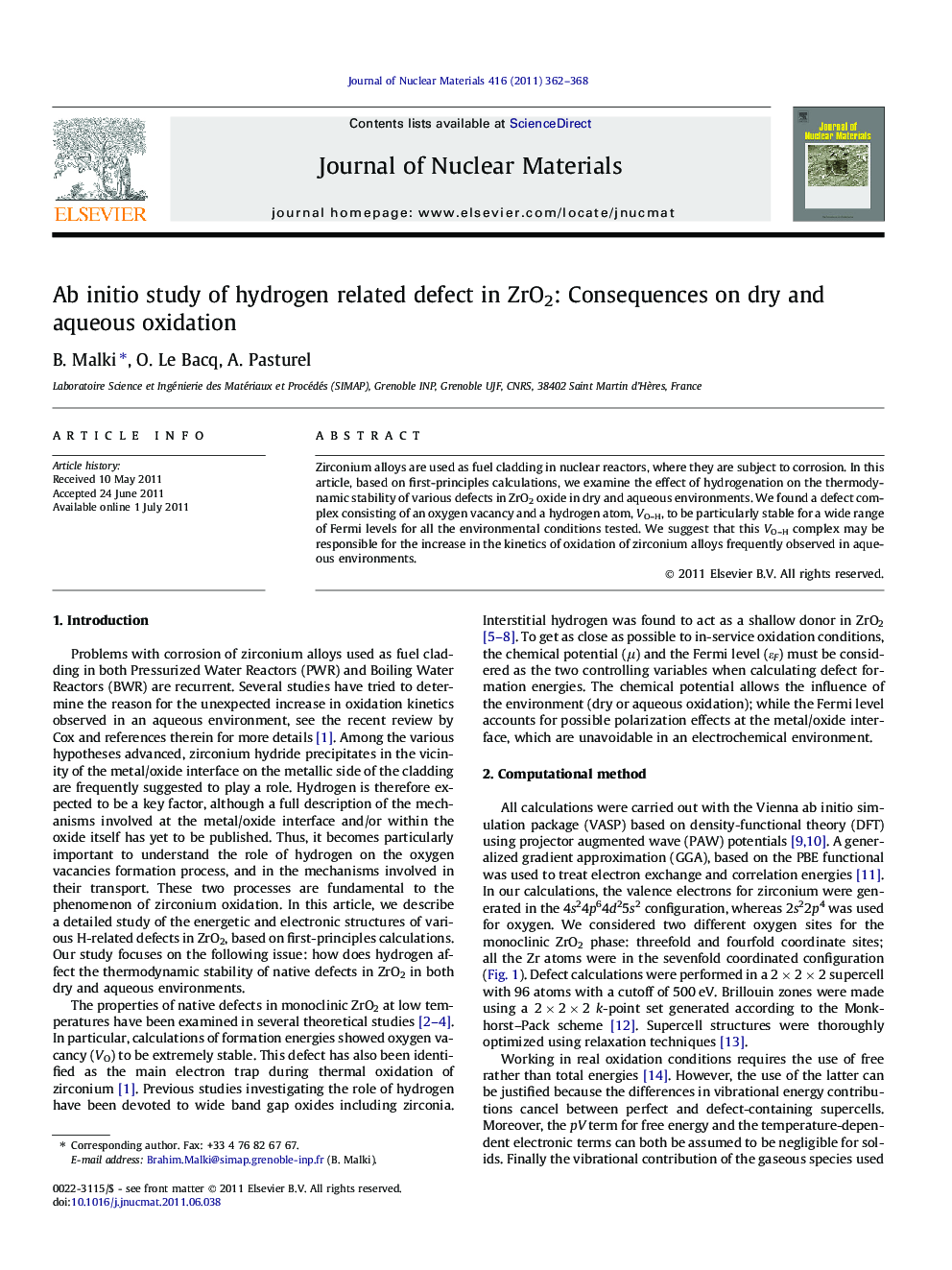| کد مقاله | کد نشریه | سال انتشار | مقاله انگلیسی | نسخه تمام متن |
|---|---|---|---|---|
| 1566781 | 999825 | 2011 | 7 صفحه PDF | دانلود رایگان |

Zirconium alloys are used as fuel cladding in nuclear reactors, where they are subject to corrosion. In this article, based on first-principles calculations, we examine the effect of hydrogenation on the thermodynamic stability of various defects in ZrO2 oxide in dry and aqueous environments. We found a defect complex consisting of an oxygen vacancy and a hydrogen atom, VO–H, to be particularly stable for a wide range of Fermi levels for all the environmental conditions tested. We suggest that this VO–H complex may be responsible for the increase in the kinetics of oxidation of zirconium alloys frequently observed in aqueous environments.
► Oxidation of zirconium alloys used as fuel cladding in nuclear reactors.
► Atomistic insights into aqueous oxidation of zirconium alloys.
► Role of hydrogen in the shadow corrosion of zirconium-based alloys.
► Oxidation kinetics of zirconium alloys depend on hydrogen contamination of oxygen vacancies.
Journal: Journal of Nuclear Materials - Volume 416, Issue 3, 30 September 2011, Pages 362–368